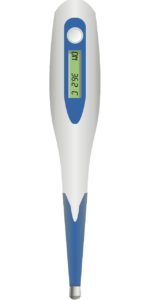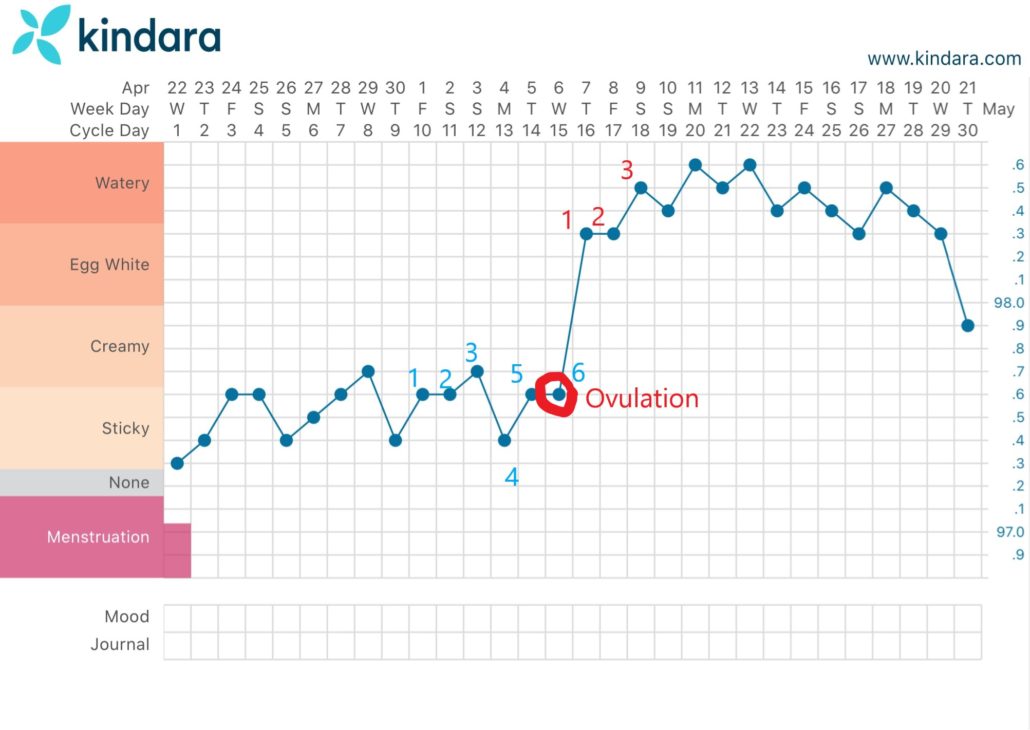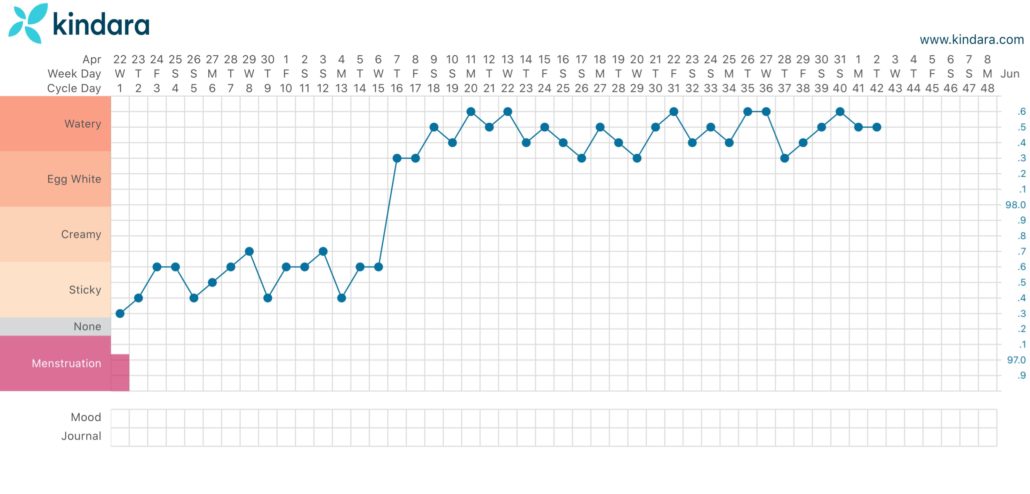BBT Charting: Top 10 Questions about Basal Body Temperatures

So you’ve entered the world of Basal Body Temperature (BBT) charting and you have questions.
Taking your BBT can be a very new and overwhelming experience for so many women. How to do it, when to do it, what do all the temperatures mean, etc. Ultimately, you want to work with a qualified professional to interpret the findings, but that doesn’t mean you can’t already start to learn about your own body now with an understanding of the basics.
With that being said, let’s dive into the top 10 questions I get from patients about taking one’s BBT.
We understand this can be a lot of information and overwhelming: if you are looking for more support and answers, set up a free consultation with our Fertility specialist Dr Jafari. Share your story, get your questions answered and learn how you can set yourself up for greater success when it comes to achieving a healthy pregnancy.
Why should I take my Basal Body Temperature?
Long story short: charting your BBT gives you an inexpensive and natural way to observe the health of your menstrual cycles.
As you observe your BBT, you learn to follow and appreciate the ebbs and flows of your cycles. You begin to notice that your body has certain tendencies or needs at certain times of the month. It is one of the first steps towards body literacy.
It allows you to identify if you ovulated. It helps you recognize when to have sex if you’re trying to get pregnant or vice versa. It can help confirm early on if you’re pregnant.
And when you work with a health professional, it can even give you a window of insight into your hormonal health.
All of this incredible, rich information simply from a list of temperatures.
Amazing, isn’t it?
What is my Basal Body Temperature?
Your basal body temperature is your body’s temperature when it’s at rest.
When should I take my Basal Body Temperature?
The ideal time to take your BBT is first thing in the morning when you wake up. Do it as soon as you’re awake and before you do anything else.
Have your thermometer next to your bed on the nightstand. When you wake up, just reach over to get your thermometer and take your temperature while still lying in bed.
If you get out of bed and then take your temperature, it will cause your temperature to rise. We don’t want that. We want that baseline resting temperature when you’re awake but still in bed. This way, when we compare the temperatures to each other, they were all taken against the same baseline.
You want to take it after having at least 4 hours of good sleep.
Ideally, you want to take your temperature around the same time every day. But, let’s be realistic. We don’t always wake up at the same time daily, especially on weekends. So even if you wake up at a much later or earlier time than you usually wake up, still take your temperature. I would just place an asterisk next to that temp and note the time you took it at.
You can take your temperature orally (under the tongue) or vaginally. It doesn’t matter which method you choose, but just stick with one.
Recap:
1. Before you go to sleep, place your thermometer within reach next to your bed. You should be able to reach it without getting out of bed
2. Set your alarm for the same time every day
3. When you wake up, reach for your thermometer and take your temperature while lying down in bed
4. Record your temperature in your chart or menstrual app on your phone
5. Take your temperature every day. I generally recommend patients to take their BBT for at least 3 months in a row so that we can identify trends in the body
Tip: I love Lisa Hendrickson-Jack’s (Fertility Friday) suggestion on getting more accurate temperature readings. She suggests leaving your thermometer in your mouth for about 10 minutes before pushing the button to take the temperature. This is supposed to give the thermometer time to adjust to your mouth’s temperature. You may consider this if your temperature readings are very unusual or off. Instead of immediately suspecting something is wrong, try this first and see if your temperature readings are more normal.
We understand this can be a lot of information and overwhelming: if you are looking for more support and answers, set up a free consultation with our Fertility specialist Dr Jafari. Share your story, get your questions answered and learn how you can set yourself up for greater success when it comes to achieving a healthy pregnancy.
What is the best basal body thermometer?
Everyone’s always asking: what’s the best thermometer?
There are a ton of basal body thermometers out on the market. And yes, they can be pretty pricy. They can sync with an app, record temperatures, etc.
Spoiler Alert: You don’t need a fancy thermometer or even a basal body thermometer. A regular digital thermometer will work just fine. As long as it takes temperatures to one decimal place (eg 97.8⁰ F), the thermometer is adequate for charting purposes.
What factors lead to abnormally high temperature readings?
There are several factors that can affect your BBT and give you unusually high temperature readings. The following are some of the most common reasons:
Poor sleep: You had a night of restless sleep, where you woke up repeatedly and weren’t able to get at least 4 hours of uninterrupted sleep. Bad sleep the night before can definitely cause your temperature reading to be abnormally high.
Alcohol: Drinking alcohol the night before can cause higher than normal readings.
Feeling ill: If you feel like you’re catching a cold and you have a fever, this will naturally cause a rise in temperature
Moving before you take your temperature: The moment you get out of bed and move your temperature will rise. This is why you want to take your temperature as soon as you wake up, while you’re still lying in bed.
Allergies
If you get an abnormally high reading, don’t stress or fret. Just record it and place an asterisk next to the temperature. You can simply make note that you had a fever or alcohol or bad sleep next to the temperature.
Does the BBT predict ovulation?
No! Your BBT cannot predict ovulation. BUT, it can confirm that ovulation did happen after the fact.
Predicting ovulation requires a combination of methods including temping, checking your cervical mucus, and observing the position of the cervix. Using a combination of these methods, you can make an educated guess regarding ovulation.
The valuable information that BBT charting gives us is an indication that you did ovulate and can sometimes even shine light on the quality of that ovulation.
How do I know if I’ve ovulated?
You can follow a very simple rule to tell if you’ve ovulated.
1. After you ovulate, you will see a rise in your temperature. This shift can be .5 to 1 degree.
2. The next three normal temperatures are higher than the previous 6 temperatures. In other words, the temperatures of the first 3 days after you ovulated should be higher than the previous 6 temperatures you took. Here is a graphic to help you visualize this better:

Ultimately, what you should be noticing is a shift between your pre-ovulatory temperatures and your post-ovulatory temperatures. Post-ovulatory temperatures should be higher. This is because your body releases a hormone called progesterone after you ovulate. Progesterone raises the body temperature and also helps prepare the uterus for a potential pregnancy.
What if my temperature goes up and then back down?
If your temperature spikes but then goes back down, it’s most likely that you didn’t actually ovulate. Remember, you want to see three temperatures that are higher than the previous six temps in order to confirm ovulation.
Is my BBT supposed to dip before ovulation?
No, this is not always the case. You certainly can see menstrual charts that display a drop in temperature the day before ovulation, but I have seen many cycles where there is no drop.
If you’re worried if you really ovulated because you didn’t have a “dop,” don’t be. Instead check your chart using the method I outlined in the previous question about how to tell you’ve ovulated.
What should my BBT be if I’m pregnant?
After you ovulate your BBT rises and generally stays high until before your period. Once your period starts, you’ll notice that the temperatures drop back down to their normal pre-ovulatory temperature levels. If you’re pregnant, you will not have a period and your temperatures will stay elevated.
Your body’s post-ovulation phase (called the Luteal Phase) can only last for a maximum of about 16 days. So if it’s been longer than 2.5 weeks since you ovulated, and you’re still seeing elevated temperatures – it’s very likely you are pregnant.

What’s a normal BBT?
During the first half of your cycle (pre-ovulatory phase), normal temperatures are considered to be anywhere between 97.0 to 97.6. If it’s a little bit ± .10 below or above, that can be considered normal too.
During the second half (post-ovulatory phase), normal temperatures range from 97.7 to 98.3.
These ranges can vary person to person. But if you’re noticing an obvious discrepancy between your temperatures and the listed reference ranges above, it would be a good idea to work with a qualified practitioner to investigate the meaning behind it.
Bonus 11th Question: How long should I chart for?
I always like to recommend that you chart your temperatures for at least 3 menstrual cycles. Three cycles worth of data generally allows us to better identify trends, patterns, and areas of concern.
Ways to Chart your BBT
Printable BBT Chart: https://www.londonwomenscare.com/doc/bbt-blank.pdf
App: Kindara & Fertility Friend
We understand this can be a lot of information and overwhelming: if you are looking for more support and answers, set up a free consultation with our Fertility specialist Dr Jafari. Share your story, get your questions answered and learn how you can set yourself up for greater success when it comes to achieving a healthy pregnancy.

